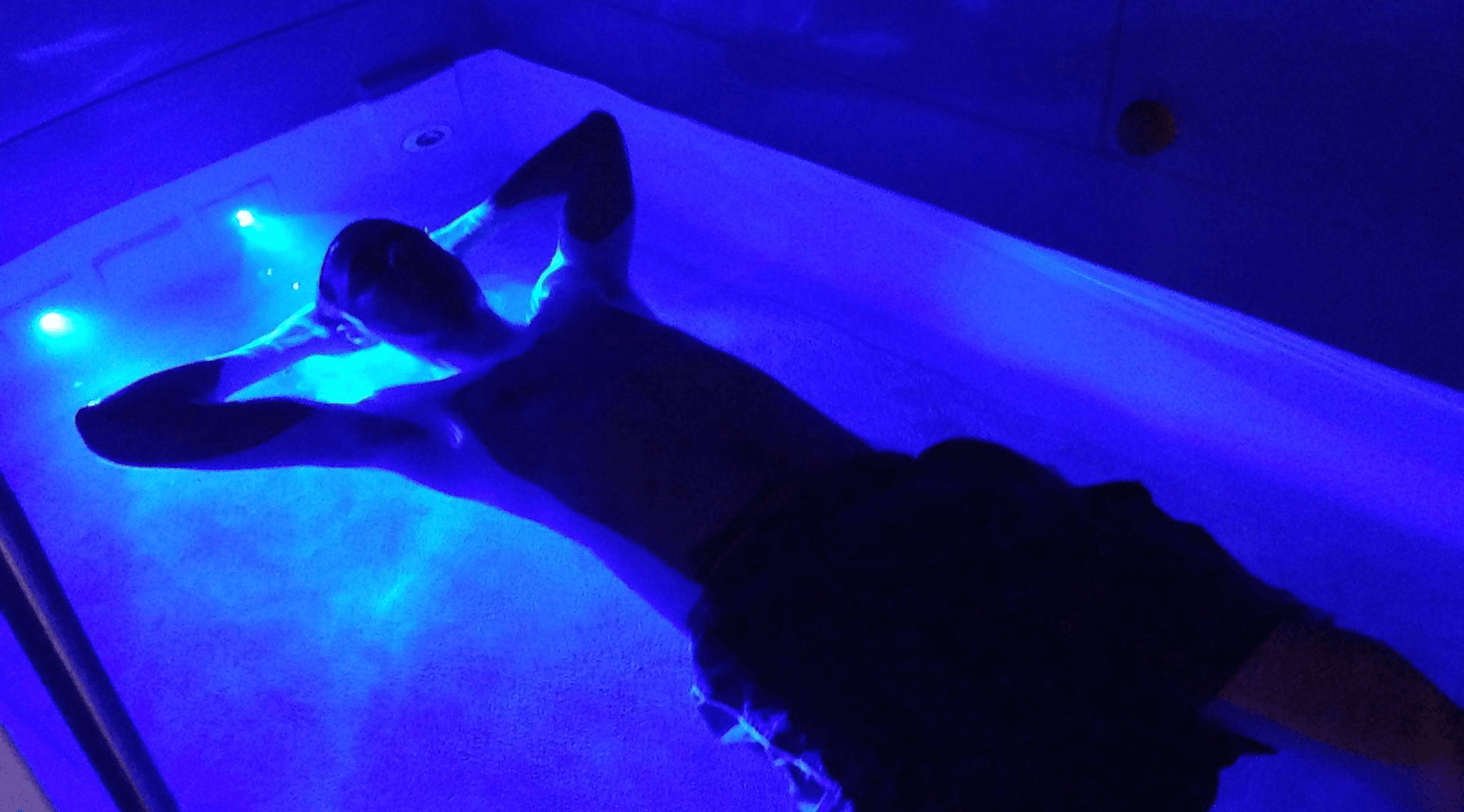Sensory Deprivation
One of the amazing and therapeutic benefits of a flotation tank is sensory deprivation. The basis is entering a tank that is heated to skin temperature and saturated with Epsom salt. The large amount of salt provides a buoyancy so you float easily in the tank. Please be assured that everyone is able to float. There is no height, weight, or age restrictions that will change how effortless floating is.
Sensory deprivation tank process
While the following may be altered to assist you with your person or medical needs, a session in a sensory deprivation tank typically go as follows:
- Remove all clothing and jewelry.
- Shower before entering the tank.
- Enter the tank and close the door or lid.
- Gently lie back. Allow the buoyancy of the water help you float.
- You may choose to listen to music. For true sensory deprivation, we recommend having the music turned off.
- Float effortlessly for an hour.
- Exit the tank.
- Shower again to remove the salt from your body and hair.
- Get dressed.
- Feel great for days to come
To make sure you are at the optimum relaxation, it is recommended that you eat something small prior to your session. This is so that you are not too hungry to relax. It is also recommended to avoid caffeine a few hours prior to your session as some people become jittery when consuming caffeine, preventing them from reaching full relaxation.
It is not recommended to shave or wax the day of your float session. This is because the large amount of salt in the water can irritate the skin from cuts or razor burn.
In most cases, you would enter the tank nude so that there is zero outside stimulation to your senses. This includes sound, light, and gravity. As you float weightless in the silent darkness, your brain enters a deeply relaxed state.
Enhanced creativity
Some compare the sensory deprivation to an extreme meditation session. Like meditation, floating in a sensory deprivation tank has been found in a handful of studies to increase originality, imagination, intuition, as well as lead to enhanced creativity. You may notice a new sense of energy after sessions. Without the typical “mental fog” you experience from being overworked and not having proper rest, you will notice that you are much more productive at work. The lack of sluggishness may make you more outgoing and ready to seize the day.
Concentration
There is some evidence that sensory deprivation may also improve your ability to concentrate and assist in focusing on daily tasks. With a clearer mind, you are able to complete daily tasks more efficiently and accurately. You may notice that you are excelling at a higher level with school studies or more effectively with work presentations.
Athletic Performance
If you are an athlete, spending some time in a sensory deprivation tank can assist in increasing your athletic performance. Competitive athletes have been bathing in epsom salt since the 1950’s as it has shown to be effective in speeding up recovery after strenuous training. There are many coaches and gyms across the world that are now offering and suggesting this form of rehabilitation after a workout or training session. Some of the reasons floating is believed to give you a competitive edge are as follows:
- Reducing lactic acid build up
- Speeds up recovery time from injuries, sore joints or muscles
- Relaxes and focuses the mind
- Eliminates fatigue more quickly
- Helps to reduce pain as well as inflammation
- Reduces cortisol levels
- Improves concentration and focus
- Aids in self-hypnosis
- Improves oxygen levels and circulation
Active users include multiple teams in the NFL, MLB, NBA, Military, MMA and Olympic athletes to name a few. With the demand of athletes today, many are looking at the most efficient ways to recover, which is why floating has boomed in popularity in recent years.
Psychological Benefits
There are many psychological benefits associated with sensory deprivation tanks. This includes anxiety, stress,and depression. Spending just one hour in a sensory deprivation tank can show significant improvement. Floating reduces activity in the cortex, which decreases the production of stress hormones and simultaneously allows for a deep relaxation that leads to release of endorphins.
Pain Management
Chronic pain is something that many suffer with over the years, The effect of sensory deprivation tank therapy on chronic pain has been confirmed by several studies to be extremely effective if you suffer from treating muscle aches, headaches, or joint pain. With reducing inflammation, you may see your body have a larger range of motion. Tasks that were once tedious and stressful to your body will require less effort or strain.
Cardiovascular Health
Floatation therapy often leads to positive results with your health on the cardiovascular level. The sensory deprivation tank promotes deep relaxation that reduces your stress levels as well as your blood pressure. Floating also helps lower cortisol levels and calm the nervous system to bringing the immune and hormonal systems back into balance.
As your body relaxes, you will notice improved sleeping patterns. This could mean less tossing and turning, an easier time falling asleep, and less waking up in the middle of the night.
Change in Mood
After a session of floating, many people notice an overwhelming feeling of happiness and euphoria as endorphins are released. Others have reported a deep inner peace as well as more optimistic on life and obstacles they are facing.
Takeaway
When used properly, a sensory deprivation tank may help relieve stress and ease muscle tension and pain. It can also help improve your mood. Much of the increase in popularity of floatation therapy and sensory deprivation can be credited to the holistic health and wellness movement and the incredible results that customers around the world have reported.





Leave A Comment